עוד בפרק זה:
מרץ 2021
הספרייה מציעה לקוראיה מידי חודש רשימת ספרים וכתבי-עת חדשים שנוספו לאוספיה כל רשומה מכילה:
מס' מיון, מחבר, כותר, מוציא לאור, שנת הוצאה , נושאים, מס' מערכת תוכן עיניינים ותקציר.
כדי לראות מצב ההשאלות יש ללחוץ על כותר.
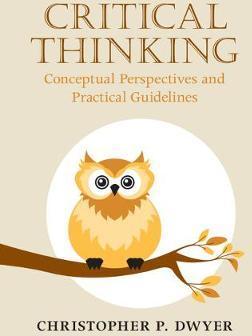 |
Dewey Number 153.4/2 DWY Dwyer, Christopher P. Critical thinking : conceptual perspectives and practical guidelines Cambridge, United Kingdom : Cambridge University Press, [2017] Contents An introduction to critical thinking -- Part I : Foundations of critical thinking : Frameworks for thinking : Bloom’s taxonomy of educational objectives ; Romiszowski’s framework for knowledge and skills ; Anderson and Krathwohl’s revision of Bloom’s taxonomy ; Marzano’s new taxonomy of educational objectives -- Memory and comprehension : Working memory : The slave systems; The episodic buffer ; Long-term memory : Schemas; Comprehension as LTM ; Cognitive load : Intrinsic cognitive load; Extraneous cognitive load -- Historical perspectives : Falsification ; Formal logic ; Informal logic -- Part II : Critical thinking skills and dispositions : What is critical thinking?: Definitions and conceptualizations : Metacognition ; Self-regulatory functions of metacognition : Critical thinking dispositions; Motivation to think critically; Need for cognition; Executive function; Mindfulness ; Critical thinking defined ; Critical thinking in the real world ; Deciding on what to do ; Deciding on what to believe -- Analysis : Analysing the structure of an argument ; Analysing the sources of arguments and claims -- Evaluation : Evaluating credibility ; Evaluating relevance ; Evaluating logical strength ; Evaluating balance -- Inference : Inference in formal logic ; Inference in informal logic -- Reflective judgment : Acknowledging uncertainty ; The role of RJ in critical thinking -- Part III : Critical thinking in real-world settings : Applications of critical thinking : Argumentation ; Verbal reasoning ; Hypothesis testing ; Judging likelihood and uncertainty ; Problem-solving : Define the problem; Gather and organize the available information; Evaluate possible strategies; Generate possible solutions ; Monitor the progress of the solution strategy ; Evaluate results of the solution strategy ; Verify the solution ; Creative thinking and problem-solving -- Judgment, heuristics and biases : Dual-process theory ; Abstract "The book provides both opportunities to learn and apply these skills through a series of exercises, as well as guidelines on how critical thinking can be developed and practices, in light of existing psychological research, which can be used to enhance the experience of critical thinking training and facilitate gains in critical thinking ability."--Back cover. Subject Critical thinking. Logic Reasoning 44290
|
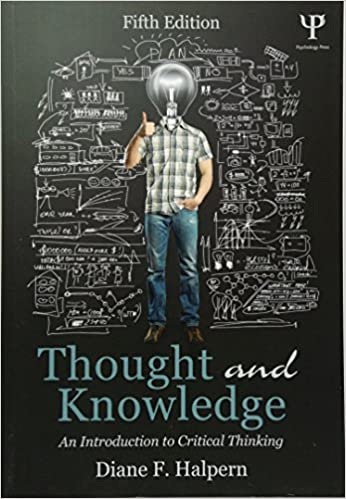 |
Dewey Number 153 HAL Halpern, Diane F. Thought and knowledge : an introduction to critical thinking / Fifth edition New York : Psychology Press, [2014] Contents Thinking: an introduction -- Thinking starts here : memory as the mediator of cognitive processes -- The relationship between thought and language -- Reasoning : drawing deductively valid conclusions -- Analyzing arguments -- Thinking as hypothesis testing -- Likelihood and uncertainty : understanding probabilities -- Decision making : it is a matter of choice -- Development of problem solving skills -- Creative thinking -- The last word -- Appendix: list of critical thinking skills. Abstract "This best-selling textbook, written by award-winning educator and past president of the American Psychological Association, Diane F. Halpern, applies theory and research from the learning sciences to teach students the thinking skills they need to succeed in today’s world. This new edition retains features from earlier editions that have helped its readers become better thinkers. A rigorous academic grounding based in cognitive psychology is presented in a clear writing style with a humorous tone and supported by numerous practical examples and anecdotes Subject Critical thinking. 44289
|
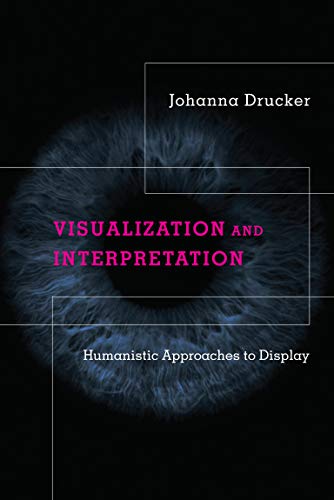 |
Dewey Number 302.2/26 DRU Drucker, Johanna Visualization and interpretation : humanistic approaches to display Cambridge, Massachusetts : MIT Press, [2020] Contents Intro -- Title Page -- Copyright -- Table of Contents -- Acknowledgments -- Framework: Creating the Right Tools and Platforms -- 1. Visual Knowledge (or Graphesis): Is Drawing as Powerful as Computation? -- 2. Interpretation as Probabilistic: Showing How a Text Is Made by Reading -- 3. Graphic Arguments: Nonrepresentational Approaches to Modeling Interpretation -- 4. Interface and Enunciation, or, Who Is Speaking? -- 5. The Projects in Modeling Interpretation, or, Can We Make Arguments Visually? -- Appendix: Design Concepts and Prototypes -- Index Abstract Visusalization argues for the importance of using traditional humanistic methodologies for the interpretation of graphical images (bar graphs, pie charts, network diagrams, etc.) Subject Visual communication Graphic arts Visual analytics 44278
|
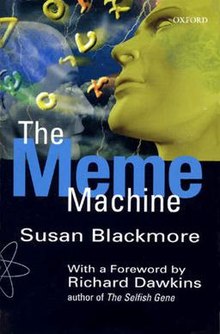 |
Dewey Number 304.5 BLA Blackmore, Susan
Oxford [England] ; New York : Oxford University Press, [2000]. Abstract Uniquely among animals, humans are capable of imitation and so can copy from one another ideas, habits, skills, behaviors, inventions, songs and stories. These are all memes, a term first coined by Richard Dawkins in 1976. According to memetic theory, memes, like genes, are replicators, competing to get into as many brains as possible, and this memetic competition has fashioned our minds and culture, just as natural selection has designed our bodies. Can the analogy between memes and genes lead us to powerful new theories that actually explain anything important? This book ends by confronting the deepest questions of all about ourselves: the nature of the inner self, the part of us that is the centre of our consciousness, that feels emotions, has memories, holds beliefs and makes decisions. Author Blackmore contends that this inner self is an illusion, a creation of the memes for the sake of their own replication.--From publisher description. Subject Memetics Imitation Behavior evolution Sociobiology Social psychology 44276
|
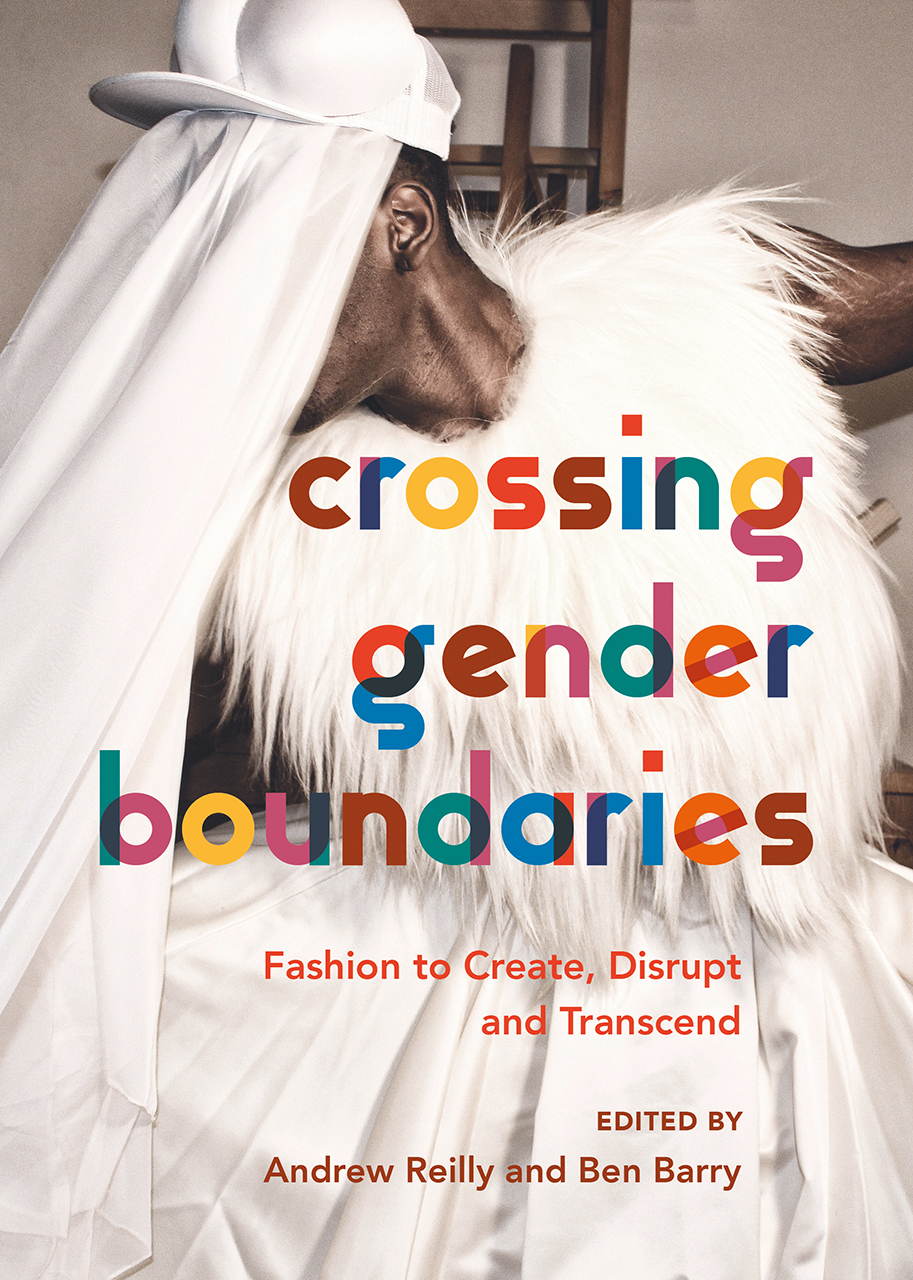 |
Dewey Number 391 CRO Crossing gender boundaries : fashion to create, disrupt and transcend Bristol, UK : Intellect, [2020] Contents Introduction -- Part 1: Creating Gender. Bifurcated Garments and Divided Skirts: Redrawing the Boundaries of the Sartorial Feminine in Late Victorian Culture / Kimberly Wahl ; "Hard and Straight": The Creation of Nineteenth Century Masculine Subjectivity through Corsetry / Alanna McKnight ; Mirror Epiphany: Transpersons’ Use of Dress to Create and Sustain Their Affirmed Gender Identities / Jory M. Catalpa and Jenifer K. McGuire ; Withering Heights: High Heels and Hegemonic Masculinity / Elizabeth Semmelhack -- Part 2: Disrupting Gender. Cute Men in Contemporary Japan / Toby Slade ; The Politicisation of Fashion in Virtual Queer Spaces: A Case Study of Saint Harridan one of the Pioneering Queer Fashion Brands in the Twenty-First Century / Kelly Reddy-Best ; ’She Was Not A Girly Girl’: Athletic Apparel, Female Masculinity, and the Endorsement of Difference / Christina Bush ; Gender More: An Intersectional Perspective on Men’s Transgression of the Gender Dress Binary / Ben Barry and Andrew Reilly ; In-vest-ed Meaning: Gender Ambiguity in Costume Collections / Katie Baker Jones and Jean L. Parsons -- Part 3: Transcending Gender. The Politics of the Neutral: Rad Hourani’s Unisex Vision / Rebecca Halliday ; Shirting Identities: Negotiating Gender Identity through the Dress Shirt / Valerie Rangel ; Why Don’t I Wear Skirts? Understanding Dress Behaviour through Historical Contexts / Jung Ha-Brookshire ; Critical Mascara: On Fabulousness, Creativity and the End of Gender / madison moore ; Clothes (Un)make the (Wo)man -- Un-gendering Fashion (2015?) / Hazel Clark and Leena-Maija Rossi Abstract This volume presents a collection of the most recent knowledge on the relationship between gender and fashion in historical and contemporary contexts. Through fourteen essays divided into three segments - how dress creates, disrupts and transcends gender - the chapters investigate gender issues through the lens of fashion. Crossing Gender Boundaries first examines how clothing has been, and continues to be, used to create and maintain the binary gender division that has come to permeate Western and westernized cultures. Next, it explores how dress can be used to contest and subvert binary gender expectations, before a final section that considers the meaning of gender and how dress can transcend it, focusing on unisex and genderless clothing. The essays consider how fashion can both constrict and free gender expression, explore the ways dress and gender are products of one other and illuminate the construction of gender through social norms. Readers will find that through analysis of the relationship between gender and fashion, they gain a better understanding of the world around them Subject Gender identity Fashion -- Social aspects. Clothing and dress -- Social aspects. Clothing and dress -- Psychological aspects 44280
|
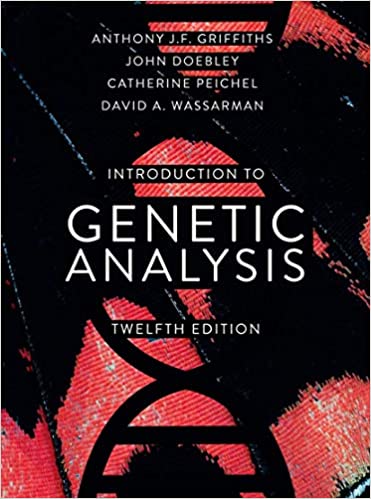 |
Dewey Number 576.5 GRI Anthony J.F. Griffiths, John Doebley, Catherine Peichel, David A. Wassarman. Introduction to genetic analysis / Twelfth edition, student edition hardcover New York, NY : W.H. Freeman & Company/Macmillan Learning, [2020] Contents Preface -- 1. The Genetics Revolution -- Part I. Core Principles in Transmission Genetics -- 2. Single-Gene Inheritance -- 3. Independent Assortment of Genes -- 4. Mapping Eukaryote Chromosomes by Recombination -- 5. Gene Interaction -- 6. The Genetics of Bacteria and Their Viruses -- Part II. Core Principles in Molecular and Developmental Genetics -- 7. DNA : Structure and Replication -- 8. RNA : Transcription, Processing, and Decay -- 9. Proteins and Their Synthesis -- 10. Gene Isolation and Manipulation -- 11. Regulation of Gene Expression in Bacteria and Their Viruses -- 12. Regulation of Transcription in Eukaryotes -- 13. The Genetic Control of Development -- 14. Genomes and Genomics -- Part III. Core Principles in Mutation, Variation, and Evolution -- 15. DNA Damage, Repair, and Mutation -- 16. The Dynamic Genome : Transposable Elements -- 17. Large-Scale Chromosomal Changes -- 18. Population Genetics -- 19. The Inheritance of Complex Traits -- 20. Evolution of Genes, Traits, and Species -- A Brief Guide to Model Organisms -- Appendix A. Genetic Nomenclature -- Appendix B. Bioinformatic Resources for Genetics and Genomics -- Glossary -- Answers to Selected Problems -- Index Abstract The twelfth edition of Introduction to Genetic Analysis takes this cornerstone textbook to the next level. The hallmark focus on genetic analysis, quantitative problem solving, and experimentation continues in this new edition. New to the twelfth edition are Chapter Objectives and Core Principles. Each chapter begins with a two-sentence paragraph describing the goals of the chapter and placing the chapter topic into context of the surrounding chapter. This helps students "see the forest" before stepping into the "trees". Introduction to Genetic Analysis divides genetics into three segments : transmission genetics, molecular genetics, and evolutionary genetics. Each part of the text now begins with a three- to five-page introduction outlining the core principles that characterize that segment of genetics. These help orient students by providing an overview of the themes they’ll encounter as they read each part. Subject Genetics -- Research. Molecular genetics Genetics -- Methodology. Molecular genetics 44297
|
 |
Dewey Number 621.3815 AGA Anant Agarwal and Jeffrey Lang Foundations of analog and digital electronic circuits San Francisco, California : Morgan Kaufmann/Elsevier, [2005] Contents The circuit abstraction -- Resistive networks -- Network theorems -- Analysis of nonlinear circuits -- The digital abstraction -- The MOSFET switch -- The MOSFET amplifier -- The small-signal model -- Energy storage elements -- First-order transients in linear electrical networks -- Energy and power in digital circuits -- Transients in second-order circuits -- Sinusoidal steady state: impedance and frequency response -- Sinusoidal steady state: resonance -- The operational amplifier abstraction -- Diodes -- Maxwell’s equations and the lumped matter discipline -- Trigonometric functions and identities -- Complex numbers -- Solving simultaneous linear equations Abstract Unlike books currently on the market, this book attempts to satisfy two goals: combine circuits and electronics into a single, unified treatment, and establish a strong connection with the contemporary world of digital systems. It will introduce a new way of looking not only at the treatment of circuits, but also at the treatment of introductory coursework in engineering in general. Using the concept of ``abstraction, ’’ the book attempts to form a bridge between the world of physics and the world of large computer systems. In particular, it attempts to unify electrical engineering and computer science as the art of creating and exploiting successive abstractions to manage the complexity of building useful electrical systems. Computer systems are simply one type of electrical systems Subject Electronic circuit design 44285
|
 |
Dewey Number 740.904 NOT Notamuse : a new perspective on women graphic designers in Europe Salenstein : Niggli, [2019] Abstract As a response to the predominantly male presence in the design scene, this book exclusively presents works by exceptional female designers. It is not about discovering something inherently ?female? and defining ?feminine? design, but to counter the male-dominated discourse of the sector. The carefully selected graphic works stand on their own and range from commissioned assignments via free artistic projects to the area of design research. They open new perspectives on how diverse contemporary graphic design can be.0This presentation is complemented by interviews conducted with 22 female designers, sociologists and design theorists. To shed light on the lacking visibility of women in the design sector, the editors especially focused on the design philosophy, perceptions, and ideals of the respective sectors and the experiences encountered in everyday work situations Subject Women designers -- Europe. Graphic design (Typography) -- Europe. Graphic artists -- Europe. Feminism -- Europe. Design -- Sociological aspects 44275
|
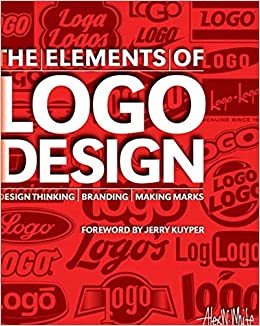 |
Dewey Number 741.6 WHI White, Alex (Alex W.) The elements of logo design : design thinking, branding, making marks New York, NY : Allworth Press, an imprint of Skyhorse Publishing, Inc., [2017] Contents Five steps to improve your design process: using logic to refine a design idea -- Putting it together: achieving a unified design -- Frozen sound: emphases and pauses in visual language -- How a logo fits into a company’s branding strategy -- How to build a logo: type and space -- How to build a logo: image and space -- How to build a logo: type, image and space Abstract Designers looking to learn the art of designing logos need look no further than The Elements of Logo Design by world-renowned designer Alex W. White. Unique in its approach to explaining how to design marks, The Elements of Logo Design explores design unity, typography and its expression as frozen sound, how a logo fits into a greater branding strategy, and how to build a logo. With more than four hundred examples culled from advertising, editorial, and web use, readers will gain a comprehensive understanding of universally shared graphic design principles. These principles are then applied to logo design specifically, relating the discipline to all other graphic design. Chapters include such topics as: Logic in design Relationships, hierarchy, and structure; Differences and similarities in design; Research and planning an identity; How to build a logo using type, image, and space; Letterforms, type, and fonts; Type alteration; Semiotics: icons and symbols; Image-to-image relationships. With a foreword by Jerry Kuyper, who is widely recognized as one of the top twenty-five logo designers of all time, The Elements of Logo Design is a formidable resource for learning the art of branding and making marks Subject Logos (Symbols) -- Design. Signs and symbols Trademarks -- Design. 44270
|
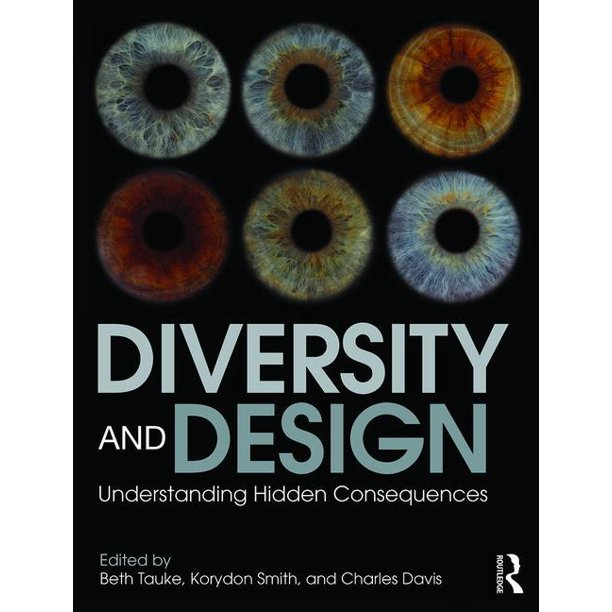 |
Dewey Number 745.4 DIV Diversity and design : understanding hidden consequences New York : Routledge, [2016] Contents Foreword : Closing the gap between the designer and the recipients of design / Sina Mossayeb -- Introduction / Beth Tauke, Korydon Smith and Charles Davis -- Part 1. Race and ethnicity : No longer just a dream: commemorating the African American experience on the National Mall / Charles Davis -- Diverse truths: unveiling the hidden layers of the Shadow Catcher commemoration / Walter Hood and Megan Basnak -- Landscape stories: unearthing the culture of agricultural communities in the Central Valley / Patsy Eubanks Owens, Maggie La Rochelle, and Jennifer L. McHenry -- Chinese puzzle: shifting spatial and social patterns in Shanghai Shikumen architecture / Peter Wong -- Architects at war: designing prison cities for Japanese-American communities / Lynne Horiuchi -- Part 2. Gender and sexuality : "Should women build?": Debating gender and architecture in Germany, 1908-1920 / Despina Stratigakos -- Communicating gender: the challenges of visualizing information for advocacy / Maya Indira Ganesh and Gabriela Sobliye -- Overwriting hate: the queer writing on the bathroom wall / Mark Addison Smith -- Designing LBGT senior housing: Triangle Square, Carefree Boulevard, and BOOM / Carl Matthews, Jennifer Webb, and Caroline Hill -- Repositioning power: an alternate approach to podium design / Kathryn H. Anthony -- Part 3. Age and ability : (Re)forming Regent Park: when policy does not equal practice / Mary Jane Carroll -- Victims and heroes: exhibiting difference in Trafalgar Square / Korydon Smith -- ExcLOOsion: how design is failing sanitary provision / Jo-Anne Bichard -- Packaging panic: the design consequences of the Tylenol murders / Beth Tauke -- iTransition: promoting healthcare independence for teens with chronic illness / Craig Vogel, Linda Dunseath, and Lori E. Crosby -- Conclusion : Prospects for the future of diversity and design / Beth Tauke, Korydon Smith and Charles Davis Abstract Diversity and Design explores how design - whether of products, buildings, landscapes, cities, media, or systems - affects diverse members of society. Fifteen case studies in television, marketing, product design, architecture, film, video games, and more, illustrate the profound, though often hidden, consequences design decisions and processes have on the total human experience. The book not only investigates how gender, race, class, age, disability, and other factors influence the ways designers think, but also emphasizes the importance of understanding increasingly diverse cultures and, thus, averting design that leads to discrimination, isolation, and segregation. With over 140 full-color illustrations, chapter conclusions, discussion questions and exercises, Diversity and Design is a valuable tool to help you understand the importance of designing for all Subject Design -- Human factors. Design -- Social aspects. 44279
|
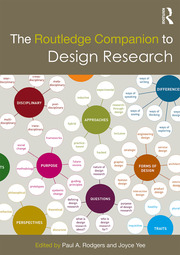 |
Dewey Number 745.4 ROU The Routledge companion to design research London : Routledge/Taylor & Francis Group, [2018] Contents Part I. What is design research?: The nature and process of design research; the purpose of design research; research approaches : The sometimes uncomfortable marriages of design and research / Ranulph Glanville -- A cybernetic model of design research: towards a trans-domain of knowing / Wolfgang Jonas -- The structuring of design knowledge / Andy Dong, Karl Maton and Lucila Carvalho -- Inclusive design research and design’s moral foundation / Jude Chua Soo Meng -- Mapping interdisciplinary design research as flow around a medidisciplinary sea / Graham Pullin -- Exploring research space in fashion: the fluidity of knowledge between designers, individuals and society / Harah Chon -- Seeking to build graphic theory from graphic design research / Robert Harland -- Part II. How do we embark on design research?: Formulating research questions; conducting a literature search and review; developing a research plan : Re-articulation prevailing notions of design: about designing in the absence of sight and other alternative design realities / Ann Heylighen and Greg Nijs -- Conducting design research in and for a complex world / Daniela Sangiorgi and Kakee Scott -- What is a ’research question’ in design? / Meredith Davis -- Towards the formulation of a research question: guidance through the glass bead game of research design / Rachael Luck -- Navigating the methodological mire: practical epistemology in design research / Ben Matthews and Margot Brereton -- The role of prototypes and frameworks for structuring explorations by research through design / Pieter Jan Stappers, Froukje Sleeswijk Visser and Ianus Keller -- The role of experimental studies in design research / Philip Cash and Steve Culley -- Researching the future by design / Martyn Evans -- A photograph is evidence of nothing but itself / Craig Bremner and Mark Roxburgh -- Part III. How do we conduct design research?: Asking questions; data collection methods; analysing information; ethical issues : Four cultures of analysis in design research / Ilpo Koskinen -- Hacktivism as design research method / Otto Van Busch -- Creative designerly mapping: using scenario thinking and co-design to inform a hybrid approach to design research / Kaye Shumack -- Drawing out: how designers analyse written texts in visual ways / Zoe Sadokierski and Kate Sweetapple -- Prototypes and prototyping in design research / Stephan Wensveen and Ben Matthews -- The visual thinking method: tools and approaches for rapidly decoding design research data / Simon Bolton -- An interpretation design pattern language / Margaret Woodward -- Action Research approach in design research / Beatrice Villari -- Studying design cognition in the real world using the ’in vivo’ methodology / Bo T. Christensen and Linden J. Ball -- Part IV. How do we communicate design research?: Writing techniques; writing for your audience; publicising your research : Interdisciplinary design research: questions, conditions and interventions / Shannon McMullen, Lisa Banu and Robin Adams -- Depiction as theory and writing by practice: the design process of a written thesis / Mark Roxburgh -- The book as site: alternative modes of representing and documenting architecture / Marian Macken -- Communicating design research: improving the design of environments for people with dementia / Richard Fleming and Fiona Kelly -- Making meaning happen between ’us’ and ’them’: strategies for bridging gaps in understanding between researchers who possess design knowledge and those working in disciplines outside design / Michael R. Gibson and Keith M. Owens -- Meaningful play: how playcentric research methods are contributing to new understanding and opportunities for design / Aaron Scott -- Examples of design research?: How we embark on design research; how we conduct design research; how we communicate design research : Examples of design research and their implications for design and designing / Alison McKay -- A mixed-methods approach to interior and architectural design history research / Kathryn L. Burton and Elaine L. Pedersen -- Research on history of architecture: an interdisciplinary approach that uses films to investigate the discourse of spaces / Cecilia Mouat -- Drifting walls: learning from a hybrid design practice / Ruth Morrow -- Designing mobile diaries: negotiating practice-led design research in a professional design setting / Penney Hagen and Toni Robertson -- Probing and filming with strategic results: international design research to validate, explore and develop a new product-service concept / Gee van Dijk and Bas Raijmakers -- Streetstarters: catalysing social cohesion at street level / Emiel Rijshouwer, Dries De Roeck, Nik Baerten and Pieter Lesage -- The 100-mile suit project / Kelly Cobb -- Celebrating the plurality of design research / Paul A. Rodgers and Joyce Yee. Abstract The Routledge Companion to Design Research offers a comprehensive examination of design research, celebrating the plurality of design research and the wide range of conceptual, methodological, technological and theoretical approaches evident in contemporary design research. This volume comprises 39 original and high quality design research chapters from contributors all over the world, with contributions from the vast array of disciplines in and around the modern design praxis, including areas such as industrial and product design, visual communication, interaction design, fashion design, hacktivism, and architecture. The Companion is divided into five distinct sections with chapters that examine the nature and process of design research, the purpose of design research, and how one might embark on design research. They also explore how leading design researchers conduct their design research through formulating and asking questions in novel ways, and the creative methods and tools they use to collect and analyse data. The Companion also includes a number of case studies that illustrate how one might best communicate and disseminate design research through contributions that offer techniques for writing and publicising your research. The Routledge Companion to Design Research will have wide appeal to researchers and educators in design and design-related disciplines such as engineering, business, marketing, computing, and will make an invaluable contribution to state-of-the-art design research at postgraduate, doctoral, and post-doctoral levels and teaching across a wide range of different disciplines. Subject Design -- Research. 44282
|
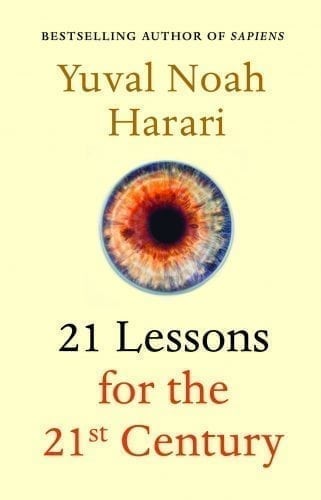 |
Dewey Number 909.83 HAR Harari, Yuval Noah 21 lessons for the 21st century New York : Random House, [2019]
Contents Machine generated contents note: pt. I THE TECHNOLOGICAL CHALLENGE -- 1.Disillusionment: The End of History Has Been Postponed -- 2.Work: When You Grow Up, You Might Not Have a Job -- 3.Liberty: Big Data Is Watching You -- 4.Equality: Those Who Own the Data Own the Future -- pt. II THE POLITICAL CHALLENGE -- 5.Community: Humans Have Bodies -- 6.Civilization: There Is Just One Civilization in the World -- 7.Nationalism: Global Problems Need Global Answers -- 8.Religion: God Now Serves the Nation -- 9.Immigration: Some Cultures Might Be Better than Others -- pt. III DESPAIR AND HOPE -- 10.Terrorism: Don’t Panic -- 11.War: Never Underestimate Human Stupidity -- 12.Humility: You Are Not the Center of the World -- 13.God: Don’t Take the Name of God in Vain -- 14.Secularism: Acknowledge Your Shadow -- pt. IV TRUTH -- 15.Ignorance: You Know Less than You Think -- 16.Justice: Our Sense of Justice Might Be Out of Date -- 17.Post-Truth: Some Fake News Lasts Forever -- 18.Science Fiction: The Future Is Not What You See in the Movies -- pt. V RESILIENCE -- 19.Education: Change Is the Only Constant -- 20.Meaning: Life Is Not a Story -- 21.Meditation: Just Observe Abstract Yuval Noah Harari’s 21 Lessons for the 21st Century is a probing and visionary investigation into today’s most urgent issues as we move into the uncharted territory of the future. As technology advances faster than our understanding of it, hacking becomes a tactic of war, and the world feels more polarized than ever, Harari addresses the challenge of navigating life in the face of constant and disorienting change and raises the important questions we need to ask ourselves in order to survive. In twenty-one accessible chapters that are both provocative and profound, Harari builds on the ideas explored in his previous books, untangling political, technological, social, and existential issues and offering advice on how to prepare for a very different future from the world we now live in: How can we retain freedom of choice when Big Data is watching us? What will the future workforce look like, and how should we ready ourselves for it? How should we deal with the threat of terrorism? Why is liberal democracy in crisis? Harari’s unique ability to make sense of where we have come from and where we are going has captured the imaginations of millions of readers. Here he invites us to consider values, meaning, and personal engagement in a world full of noise and uncertainty. When we are deluged with irrelevant information, clarity is power. Presenting complex contemporary challenges clearly and accessibly, 21 Lessons for the 21st Century is essential reading Subject Civilization, Modern -- 21st century Twenty-first century -- Forecasts Social prediction World politics History, Modern -- 21st century Social change Conduct of life 44274
|
- כתבות, חדשות ואירועים



